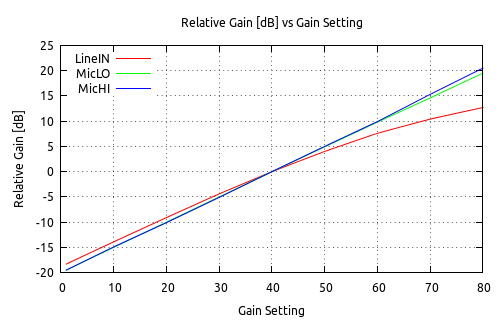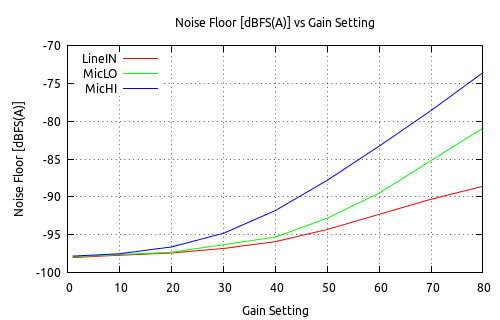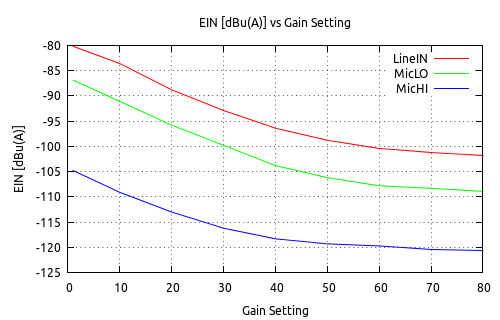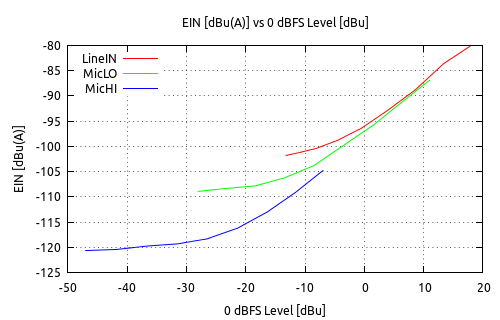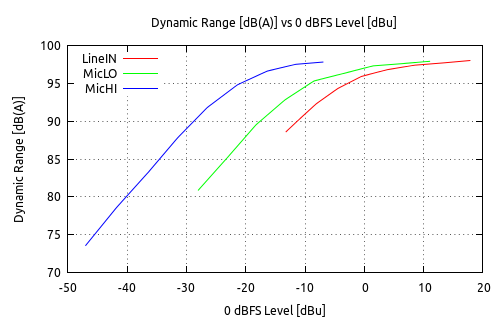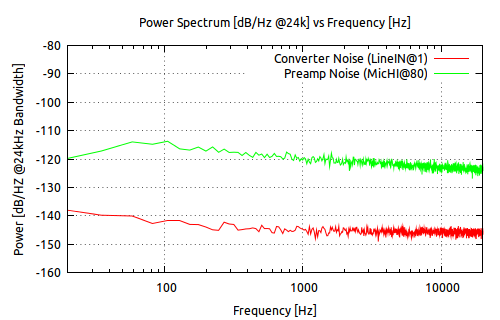Introduction
I recently bought a Zoom H1 handheld recorder. As such, it offers tremendous value for the money, and I would likely have kept it (despite the fact that the handling noise is really high and the stand-mount is just made of plastic and the threads may easily be destroyed). However, as it turned out, my sample with serial number 12xxx suffered from a high current drain when switched off. It consumed 47 mA, which means it will drain a normal Alkaline battery in 2-3 days.
Zoom was quick to respond from their Japan support office and apologized for the problem and asked me to return it for another. It is known problem (likely a failing capacitor), but unfortunately all other Zoom H1 on stock at the dealer had serial numbers lower than 20000, and could also have (or develop?) the problem. I decided to stay away from the H1 for this reason unfortunately, and instead settled on the H4n (as the H2 is an older product) — but it was not in stock.
So, after some further deliberation, I ended up with the Roland R-05 (and not the Edirol R-09HR, mainly as the additional features in the R-09HR were not essential to me and the price was higher).
As it turns out, I became quite happy with this selection. Not only is the handling noise lower than on the Zoom H4n or the Edirol R-09HR, but the converters and pre-amps are also improved upon the R-09HR, so the recording quality is really high and very similar to that of the Sony PCM-M10, as far as I can tell. As for the handling noise, try to tap the recorders with your fingernail… both the H4n and the R-09HR have a clear case-resonance that you can hear; the R-05 appears more damped to me.
Noise and Dynamic Range
Based on the excellent analysis found at AVISoft, I decided to do a comparative measurement (as the R-05 was not included in the test at that time, although the data below has now been added to the table — thanks Raimund!).
The conclusion is give first, with more detailed measurements below.
I have made the measurements in 48 kHz 24-bit mode. I have repeated several measurement points at 16-bit and other sampling rates with nearly identical results (apart from the loss of resolution in 16-bit mode).
The following table lists the Equivalent Input Noise (EIN) and the corresponding sensitivity, given as the level where clipping occurs (i.e. 0 dBFS). The Dynamic Range (DR) is simply the difference between the two.
The Roland R-05 has a “hidden” menu where you can change the MicHI additional preamp gain. The nominal value is +18dB, but it can be changed to +13dB or +28dB. You hit the “hidden” menu by holding the “A<>B” button while pressing the “MENU” key and then go to the 8th item in the menu.
| EIN | O dBFS | DR | |||
|---|---|---|---|---|---|
| dBu(A) | dB | dBu | mVrms | dB(A) | |
| Roland R-05 (+28dB) | -122dBu | -120dBu | -57dBu | 1.1mV | -65dB |
| Roland R-05 | -121dBu | -119dBu | -47dBu | 3.5mV | -74dB |
As can be seen, using the +28dB “HI” gives virtually identical results to the Sony PCM-M10 (maybe they use the same chips)? However, using the nominal +18dB “HI” setting only looses one dB in EIN but gives an extra 9dB in headroom. There is thus a difference in the 0dBFS level between the two settings, but if you have e.g. an input signal of -114 dBu (which is quiet — this is the noise floor of a Røde NT4), your input signal registers at -67 dBFS instead of -57 dBFS giving you 9 dB more headroom — but the Signal-to-Noise ratio only (SNR) drops from 8dB to 7dB! Obviously there are less bits to represent the noise at the lower level… but I doubt that makes any difference in practice.
So it appears wise to use the nominal +18 dB “HI” setting in most cases. If you don’t need the extra headroom, really need the last dB and/or don’t want to post-process and need the higher recording level directly “on tape” (or MP3), then using +28dB “HI” is just fine.
It can further be seen from above and below that the mic preamp is in fact quite low-noise. The EIN are for the total chain, i.e. including the converter stage noise floor, so the mic preamp alone would have an estimated EIN of around -123.5 dBu(A).
The other essential key parameters are here (specified value in parenthesis — assuming the “default” setting is indeed Gain Setting 40, which is the factory default).
| LineIN | MicLO | MicHI | MicHI (+28dB) | |
|---|---|---|---|---|
| EIN [dBu(A)] | -102.4 | -109.1 | -120.9 | -121.8 |
| 0 dBFS Level @40 [dBu] | -0.6 (-7) | -8.4 (-15) | -26.4 (-33) | -36.4 (unspec) |
| Attenuation @1,20,40,80 [dB] | -18,-9,0,+13 | -20,-10,0,+20 | -20,-10,0,+20 | -20,-10,0,+20 |
| Resulting 0dBFS Level @80..1 [dBu] | -13 .. +18 | -28 .. +12 | -47 .. -7 | -57 .. -17 |
| Int Mic Self-Noise [dBu(A)] | -109.4 | |||
| Converter Stage Noise [dBFS(A)] | -98.0 |
As can be seen, the inputs are around 6 dB less sensitive than spec’ed — which is good considered some have expressed concerns about the inability to drive the LineIN a bit hotter. If the Edirol R-09HR would be at spec, then the LineIN clipping level, at the default settings, are quite close to one another (-0.6 dBu measures R-05 vs. 2 dBu nominal R-09HR).
The gain settings below 20 seems to cause some additional (analog) harmonic distortion when driving them hot, at least on the LineIN, so it is likely best to avoid going below 18 if you can (20 is OK, though and so does 18 appear to be). Notice that the gain range is somewhat smaller and less linear on the LineIN than on the Mic inputs. There are two different input circuits, I think.
Thus, using the gain range of 18..80 seems just fine, so at e.g. setting 30, the LineIN clipping point is around +4 dBu (similar to the “0dB UV reading” of professional audio level in the US), with a dynamic range of 98 dB(A) — which is pretty good for a small handheld unit, I think. Clipping at the consumer audio level of -10 dBV (-7.8dBu) is reached on the LineIN at a gain setting of 70, which will give you a Dynamic Range of 90 dB(A). Note that if you send the signal to the MicLO input/setting instead at gain 45, you will get a Dynamic Range 94 dB(A). But remember that you may want some headroom above the +4dBu/-10dBV levels if you drive your signals hot.
For 16-bit, even if not listed, the Converter Stage noise floor is around -93dB(A) — which is what would be expected if there is a small amount of noise injected to dither the signal before conversion, to achieve a higher “apparent resolution” and less distortion.
Detailed Analysis
The attenuation at various gain settings are listed below. The MicLO and MicHI are very similar, but the LineIN is different. This indicates that there are two parallel preamp/input circuits in the R-05; one for the Mic LO and HI, and one for the Line. The MicHI setting is very likely using the same preamp as the MicLO, but has an additional programable +13dB/+18dB/+28dB LNA (Low Noise Amplifier) at the input stage, which accounts for the improved EIN in MicHI vs MicLO.
The Noise Floor, measured as the A-weighted noise with a shorted input, is as below. It is graphed versus the gain setting. At low gain settings, it is dominated by the Converter Stage noise. At high gain settings, it is dominated by the EIN of the preamp circuits. The settings in between can in theory be calculated as the geometric mean of the two noise levels (i.e. the resulting EIN squared is equal to the sum of the squares of the EIN/noise of the converter and preamp circuits).
Based on the above and knowledge of the absolute sensitivity (i.e. the 0 dBFS/clipping level), the EIN can be calculated vs. the gain setting. At high gain settings, the self noise of the converter is no longer significant, and the “real” EIN for the preamps can be read.
The same noise figure as above can also be graphed vs. the sensitivity, i.e. versus the 0 dBFS/clipping level. This gives the following interesting graph, that may help you to pick the best setting for your recording.
The lower the value the better. So if you record something that peaks at -20 dBu, then if possible, the MicHI setting will give you roughly 7 dB less noise than the MicLO (at the required gain setting — to achieve the same sensitivity between the two, you need a lower gain setting for the MicHI than for the MicLO input).
Taking into account the sensitivity, it is then possible to plot the Dynamic Range vs. the sensitivity, as pr. below. Higher is better, obviously. Note that it is possible to achieve recordings with more than 90 dB Dynamic Range in the entire range between roughly -30 dBu to +20 dBu, selecting the relevant inputs — but remember that the highest input levels (with Gain Setting less than 20) may bring additional harmonic distortion.
Lastly, the power spectrum of the noisefloor of the converter (i.e. measured at LineIN @ Gain 1) and the preamp (measured at MicHI @ Gain 80) is shown below.
For the technically inclined: The plot below is the energy content/Hz at 24 kHz Noise Bandwidth, so the total noise energy is the area under the curve. Just “ballparking” the total energy (and thus trying to get an estimate of the RMS value as well), pick the average of the line, and add 10*log(24.000) or around 44 dB to that number — but remember that the data has been Hann weighted before doing the FFT, so there is a small reduction of the total energy calculcated this way due to the weighting.
Anyway, the noise looks quite clean to me:
Implications for use
Using MicHI in favour of MicLO seems to be best to achieve the highest Dynamic Range. When possible, use even MicLO in favour of LineIN, however also taking into account any impedance matching issues also. You may need to experiment. But this will achieve the best dynamic range for a given signal. MicLO should only be used when there is a risk of peaking or possibly when the gain setting would be less than 20 for MicHI.
If you need more gain, then the +28dB setting will give it to you. In the overlapping range it will even give you another estimated 1 dB EIN improvement (i.e. the additional gain is +10dB while then noise “only” increases +9dB). But as said above, the noise difference is likely not noticeable in practice. If you really need the gain, use the +28dB function — but remember you at the same time loose 9dB in Dynamic Range, so it might be better just to increase the gain in post production digitally (unless you don’t worry about clipping).
The internal mics are quite low noise and appears well balanced with the rest of the circuit. Normally you want the EIN of your preamp to be a few dB lower than that of the microphone. In the MicLO setting, they are about equal, which is reasonable and very useful for louder signals. But but the MicLO will still give 3-6 dB better performance when using the internal microphone (the reason you don’t get the full 9 dB improvement is due to the fact that the MicHI preamp is somewhat quieter than then internal microphone, so the later becomes the dominant noise element).
Other Remarks
I actually ended up testing two samples. The first one I got had around 1.5-2.5 dB difference between the left and right capsule. Roland says this can be fixed by changing the capsules, but even if a replacement microphone section is available in their systems (it has a part number), the R-05 is still so new (Nov 2010) that it is not available yet anywhere. The first one I got was an earlier returned model (reason unknown), so I instead opted for a replacement by the friendly dealer. The newer one still has a minor difference between the internal microphones, but it is probably around 0.6 dB only, so I will keep this one and maybe have it calibrated later. The R-09 has an internal test mode that allows you to tweak the levels of the internal microphones; I guess the R-05 has some calibration tool (internal or external) that can do the same thing too.
As for the performance of the two samples, they are very close and shows the same numbers to within 0.5 dB.
The microphones are omnidirectional, and I actually consider that to be a good thing; they usually have more linear response than cardioids, especially in the low end, and they have no proximity effect. You anyway need careful placement of the recorder, but it is of course true that you may pick up a bit more ambiance than with more directional microphones.
Note, however, that the directionality (achieved by “shielding” from the recorders form factor) is a bit more than for the Editor R-09HR, so you may pick up slightly less ambiance vs. the R-09HR.
As mentioned, you get to the internal setup menu by holding the “A<>B” button while pressing “MENU”, and then select the 8th item. Incidently, I found out that holding “FINDER” and “A<>B” while booting sets the default language to Japanese (labelled DOM for Domestic). You get it (back) to English by holding “REHEARSAL” and “A<>B” buttons while booting. Both actions also restores the factory settings.
Lastly, for anyone contemplating using this device to record audio for video: I recently did some video shots, where the longest clip went up to almost 23 minutes. I “clapped” the start and the end of the video, which was done with the Lumix DMC-FT2 camera, and the difference between the sync points on the built-in track and on the R-05 at the end of the recording was down to 3.4 mS — which is around 1/10th of a frame, and less than the time it takes sound to travel a little more than a meter! So no need to re-sync even during a longer clip for me for normal use.
Technical Notes
The measurements above have been done using a combination of various techniques and tools.
To stimulate the input of the recorder, I have used a pair of output from my 8-channel Presonus Firepod firewire external “soundcard”, having generated the stimulus as required using Wavelab on my Windows PC. To ensure I had the right levels, I verified the signals/levels/energy content with a Tektronix TDS340A scope and also double-checked with a small handheld Digital Multimeter.
The analysis has been done with a combination of Audacity (and Wavelab) using the Wave Stats plugin plus OpenOffice Calc (an opensource Excel-like spreadsheet). For the FFT analysis I have used Octave (a very good opensource MatLab clone). All graphs were prepared using GnuPlot, automated by some small shell scripts. Most of this running on Ubuntu 10.10.
